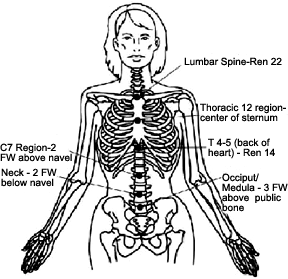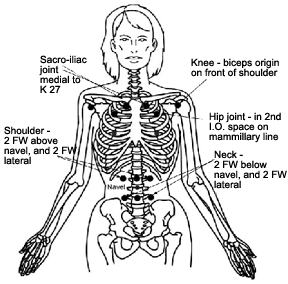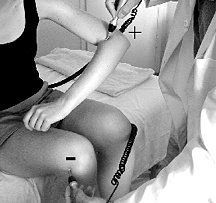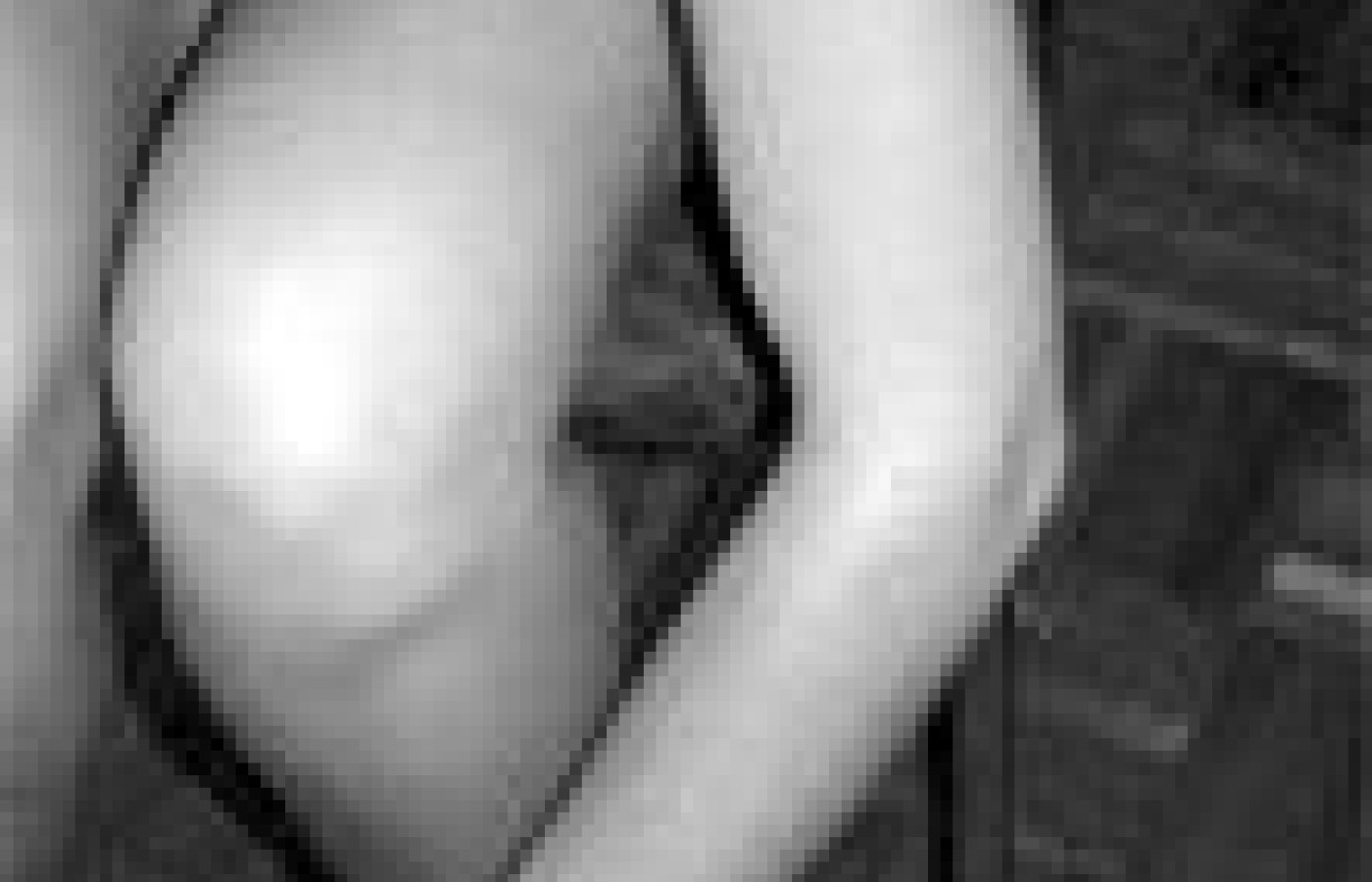Whether you accept it, avoid it or live somewhere in between, insurance coverage has become a defining issue for our profession. Patients increasingly expect to use their benefits, practitioners want to be compensated fairly for their time and expertise, and the system itself remains – at best – fragmented. The encouraging news is that coverage has expanded in meaningful ways. The challenging news is that reimbursement, across the board, remains inadequate.
"As Above, So Below" Acupuncture: Great Loops and Reverse Body Image Points
One of the greatest contributions from acupuncture is the understanding of the interrelatedness of all parts of the body, and the ability to effectively treat using this understanding. It is the use of distal acupoints, energetically related to the afflicted body area, that often brings the most immediate balance and relief.
Many of us use this method without fully knowing the basis for its effectiveness. A valuable model for understanding and selecting highly effective distal treatment points can be found in ancient writings often referred to as Hermetic Law.
The Hermetic Laws originated in ancient Egypt or earlier, and are attributed to the god-man Thoth (pronounced "Toth"). Thoth was called Hermes in ancient Greece, and Mercury in Rome. In the Middle Ages, he was referred to as Hermes Trismegistus, and was considered the originator of 42 books of esoteric knowledge collectively known as the Hermetica. The Hermetic Laws are a major basis for the Kaballa tree of life and most other metaphysical teachings throughout the ages.1
A brief survey of the Hermetic Laws will quickly reveal that they also explain the basis for all forms of vibrational healing, including many aspects of Chinese medicine and modern quantum physics.
Of the seven best-known Hermetic Laws, the best known principle is "as above, so below," also known as the Law of Correspondance. This principle has been key to such diverse pursuits as astrology, magical practices, quantum physics and traditional acupuncture. Five-element acupuncture is a system especially organized around extensive lists of correspondences between organs, colors, smells, directions, emotions, animals and much more.
A simple way to grasp as above, so below is to examine the similarity between our solar system and the structure of atoms. Both have a central nucleus with bodies orbiting around it in regular patterns. One could also compare the spiral shape of the Milky Way galaxy to spiral snail shells and the DNA double helix within our cells. Such clear correspondences exist on all levels throughout nature and consciousness. The universe is holographic in nature: the whole exists in each part, no matter how minute.
Musical instruments, such as pianos or sitars, demonstrate resonance between octaves. If a note is played in one octave, such as middle C, sympathetic tones are created in other higher or lower octaves of that same note through the principle of as above, so below. It is similar with consciousness and our energy bodies.
We exist on many levels simultaneously, from the most dense and gross (physical) to the most subtle (spirit). Injuries to the physical body can create ongoing interference in the subtle energy bodies, thereby creating stored, self-perpetuating memories of trauma. Held negative impressions on the subtle energy level can also precipitate in the physical as disease and pain. In fact, such interferences can actually attract accidents and other traumatic events to people through the Law of Attraction.
This holographic nature of the body is recognized in the acupuncture classics, paraphrased as follows (assume the opposite is also true after each statement):
"For diseases of the upper body, treat the lower body. For diseases of the right treat the left. For diseases of the front, treat the back. For diseases of the inner, treat the outer."
As Above, So Below Acupuncture Treatment Methods
These time-tested principles can be used for highly effective pain relief and energy balancing treatments in the acupuncture practice. They are clearly manifested through two acupuncture methods: microsystems and great loops distal acupoints.
Microsystems are holographic representations of the entire body projected in a single body part. Most acupuncturists are familiar with and clinically utilize microsystems, which are commonly treated in areas as diverse as the ear, hand, foot, face, abdomen and gastocnemius muscle. Stimulating an appropriate microsystem point can cause a healing or pain-relieving reaction in the corresponding body part. Pain is often relieved more effectively through stimulating a distal holographic micropoint than treating the affected area directly.2
Two of the most powerful and effective clinical applications of as above, so below I have experienced are treatment of great loops and reverse body image (RBI) points. These are based on the principles mentioned above in the Nei Jing passage. Microcurrent stimulation through polarized probes is an ideal way to perform these treatments.

Here are photos of the as above, so below correspondence of the major joints of the body:
The phrase "great loops" literally refers to the six great meridians of taiyang, yangming, shaoyang, taiyin, jueyin and shaoyin, each of which includes one upper and one lower extremity channel. Treating tender points on the lower extremity channel for pain of the upper extremity channel can be an effective pain controlling method. I am expanding "great loops" here to include all energetically-related meridians on the upper and lower body.

As above, so below can also be applied to RBI points on the trunk of the body. For example, the spine is holographically represented on the front of the body, upside-down:
The major joints are also projected on the body in a similar way:
More information about these "reverse body image" points on the trunk can be found in the work of Peter Mandel, ND, originator of the German colorpuncture system.

Treating As Above, So Below Points
Great loops treatment is utilized for pain and injury of the extremities, while RBI points are primarily used for disorders on the trunk of the body.
The principle of great loops treatment is simply that, for pain on or around a joint, go to the joint on the opposite quadrant of the body, as shown in the joint correspondence pictures above, and palpate for very tender points. When treated, these distal points will likely be highly effective for relieving pain in the symptomatic area.
Treatment of RBI points is similar. Using the charts above, find the region corresponding to the painful or diseased area. Palpate to find the sorest point upon pressure, and use that for distal treatment.
There are several methods that can be used to treat as above, so below points:
1. Microcurrent probe stimulation. This is my favorite method, because polarized microcurrent probe therapy can correct imbalanced polarity fields in the body rapidly and powerfully. Such treatment creates a gentle electrical circuit between the point of pain and the corresponding point. I also like it because it works much more quickly than acupuncture needling for this purpose, in my experience.

While there is certainly room for customizing settings to individual patients, the following electrical parameters work well:
- Intensity: 75 µA
- Frequency: 10 Hz
- Polarity: negative
- Waveform: square
- Timer: 5-6 seconds
- Modulation: if available, alternate 10 Hz with 5 Hz every 3 seconds to avoid accommodation3
Place the positive probe (counterprobe) on the local point of pain, and the negative probe (trigger probe) on the tender point you found on the opposite aspect of the body. For example, for tennis elbow, place the positive probe on the painful elbow, and the negative probe on the sore point around knee joint on the opposite side of the body. If available, use the device's search function to hone in on the most highly conductive local and distal points.
Look at conductivity reading on the device meter and note. Press the trigger button and treat for 5-6 seconds. After the timer has expired, look at the conductivity reading again. If it has increased, press the trigger again to give another treatment period on the same points. Keep treating in this way in 6-second segments until the conductivity reading stabilizes, and does not rise any more.4 If the readings significantly increase after 2-3 treatment segments, the patient will most likely report lessened pain and/or increased range of motion.

You can continue to treat in this way by placing the positive probe on other painful points in the same or related areas and palpating for additional distal tender points. The two main reasons for poor results with this method would be incorrect choice of polarity or frequency, or incorrect distal point selection.
2. Color light therapy. Light is also very effective for as above, so below, as it is the prime medium of communication between all the parts of the body, and with the outer environment. Using any good focused color light device, shine an appropriate color onto the tender distal point for 20-30 seconds. Kinesiology (muscle testing) is quite helpful in confirming color selection. For distal pain points, generally use cool colors in the blue and green wavelengths, or use complementary color balancing on bilateral points.5
The following colors are commonly affected for treatment of major joints through RBI points:
- Neck: green or blue
- Shoulders: green or blue
- Sacroiliac joints: red/green (green on the more tender side, red on the other side)
- Knees: yellow or green
- Hip joint: red/green (green on the more tender side, red on the other side)

Microcurrent may be combined with color light therapy for treatment with often excellent, synergistic results. I have developed a special combination probe system for this purpose.
3. Needle acupuncture. Needling is also effective for treatment of great loops and RBI points. Find the most tender distal point, and place a needle to a depth that produces an energetic release (teh chi). Leave it in place for 10-20 minutes, periodically manipulating it to maintain stimulation.
Because creation of a circuit between the pain point and the distal point is often superior to stimulation of the distal point alone, I recommend needling both, and connecting them with an ion-pumping cord. In most cases, place the red clip on the pain point and the black clip on the distal point, although this may need to be reversed in some patients. Proper polarity can be confirmed through pulse, patient response or kinesiology.
References
- There are many good writings about Thoth and the Hermetic Laws available on the Internet, found through any search engine.
- Maps of auricular, hand, foot, face and other microsystems are readily available in English-language texts. See www.redwingbooks.com or other catalogs for reference books.
- When using the Acutron Mentor, these settings are produced by selecting probe preset #2.
- Meter readings while treatment currents are being delivered are not relevant to this method, only the conductivity readings after treatment has ended and the unit is in measuring mode.
- For principles of complementary color balancing, see my previous article, or the work of Peter Mandel.



